I stood on a rock high on a hill and looked down at a panorama of sea, grassland and forest. I was in the Port Davey Marine Reserve, deep in the Southwest National Park. Looking back at me, I thought, was the soul of Tasmania.
I had flown in by light plane the previous day. You come here by plane or by boat. This is a soul protected by the law of man and the lie of land. There is no other way in.
This is part of land which a panel of objective but hard-nosed environmentalists at UNESCO headquarters in Paris decided deserved the appellation of World Heritage Wilderness Area. This a title not awarded to places where there are more people than peace, where there is more noise than nature, where there is more concrete than bird calls.
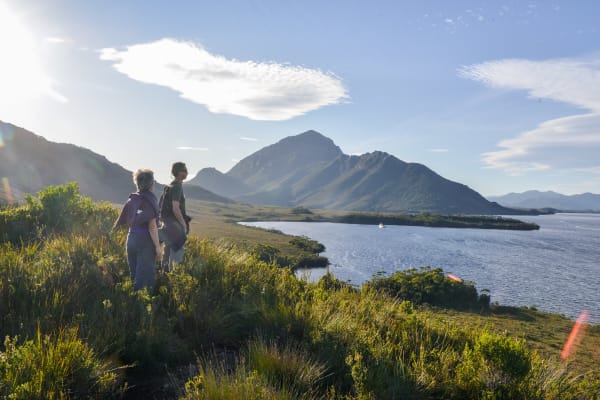

To earn the title, the environmentocrats in Paris must judge whether the candidate has, amongst other criteria, “natural features consisting of physical and biological formations or groups of such formations, which are of outstanding universal value from the aesthetic or scientific point of view”, and “geological and physiographical formations and precisely delineated areas which constitute the habitat of threatened species of animals and plants of outstanding universal value from the point of view of science or conservation”.
They wouldn’t have had to think too hard about it. This is the home of extraordinary beauty. It is the home of the much-loved and desperately threatened orange-bellied parrot. It is the home of many animals and plants which haven’t been seen on the Australian mainland since the days Tasmania was still attached to it.
“Tasmania acts as a living museum of species which reveal Gondwanan origins,” says the web page of the state Parks and Wildlife Service. “Their closest relatives are found in the other continents that comprised Gondwana: South America, New Zealand, Antarctica and southern Africa. Such vertebrate groups as the marsupials, parrots, frogs and freshwater fish comprise many species of Gondwanan ancestry. The invertebrate fauna is particularly rich in Gondwanan species, such as the 250 million year old mountain shrimp (Anaspides tasmaniae), one of the most ancient representatives of the crustaceans.”
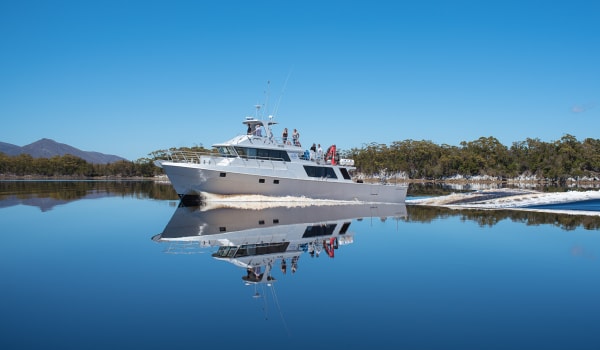

The shrimp is just a youngster, however. The velvet worms (Euperipatoides and Ooperipatellus spp.) have changed little in the past half a billion years.
On my rock, in my corner of the Port Davey Marine Reserve, I am close to Bathurst Harbour. This is technically a drowned river valley and is one of the most unusual places on earth. It has rare physical attributes which create a phenomenon called deep-water emergence. When fresh water meets salt water, the fresh water takes the high road, forming a layer which sits above the denser salt water. The fresh water that flows into Bathurst Harbour comes from the North and Old rivers and is tannin-stained. The staining prevents sunlight penetrating to usual depths, meaning that as little as five metres below the surface of Bathurst Harbour the water is as dark as at levels found deep in the oceans, and the usual shallow water marine species are replaced by fascinating deep-water communities rarely accessible by recreational divers.
The Bathurst Harbour marine environment includes soft corals found nowhere else, sea fans, sponges, tube worms and the amazing sea pen (an octocoral so-named because its feathery appearance evokes quill pens), plus sharks, skates and rays usually found in much deeper water. The cusk-eel is unique to Bathurst Harbour, and the endangered maugean skate is found only there and in one other nearby estuary.
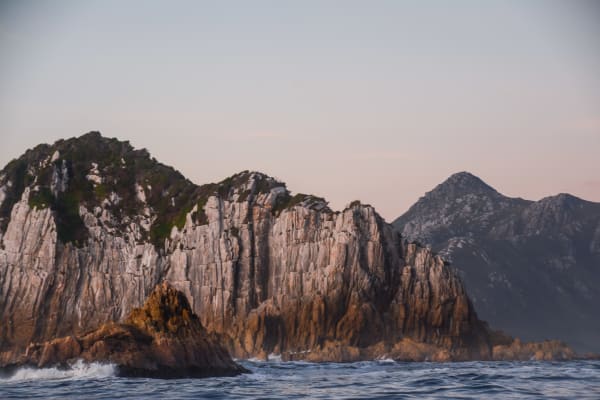
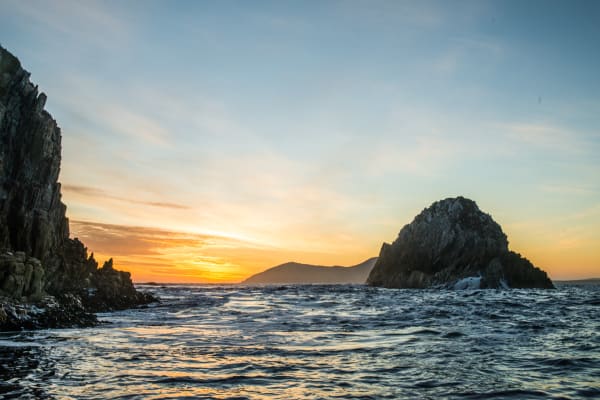
It’s time to leave my rock, because it’s time for lunch – time to turn from the mind-stretching vastness of nature to the small matters of that late-comer to our ancient wilderness, human beings. Lunch today is pan-fried flathead, panzanella salad and raspberry vinaigrette. Lunch yesterday was tuna tataki with pickled ginger, wasabi and ponzu. Tomorrow it will be spiced rack of lamb with cauliflower, fennel, yoghurt and pomegranate.
The dinners are more elaborate.
The chef is Ben Hay. He’s planning to open a restaurant in Hobart one day, but for now he’s working a season aboard the MV Odalisque, a modern, 20-metre, aluminium-hulled vessel that sleeps (and feeds) 10 people in great style.
The Odalisque is why I am here, at the invitation of its owner and operator, Pieter van der Woude. Pieter has worked for Tasmanian Police, for the Australian Antarctic Division, for the Tasmanian Land Conservancy, and for himself as an abalone diver. If the legendary Deny King was the human soul of the south-west, Pieter is close in line behind him. His love of the area is as vast, and as infectious, as his knowledge.
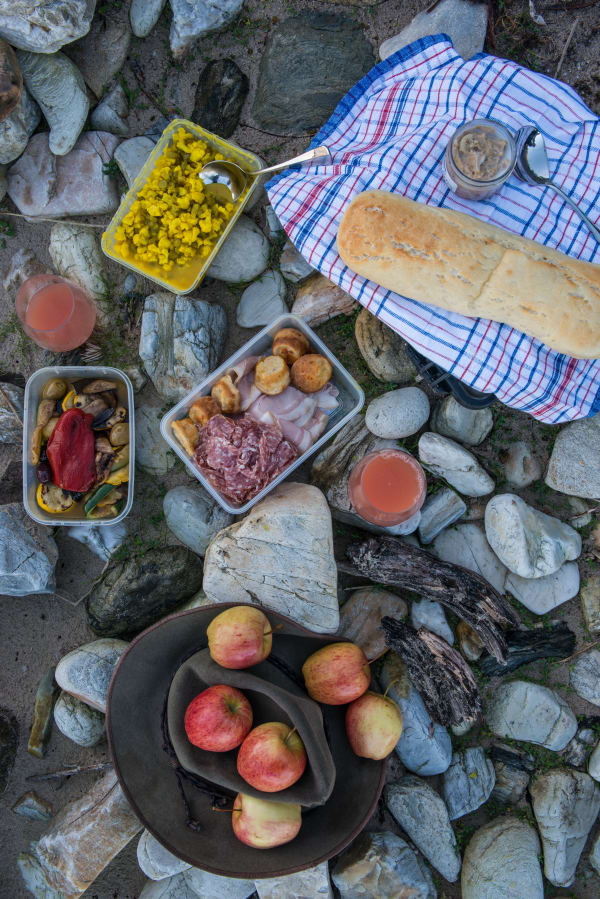

He has competition the wilderness knowledge stakes, however, in the shape of Peter Marmont. He’s here as our guide, our Tom Bombadil. He is immersed in myriad ways, including a 30-year involvement with the orange-bellied parrot conservation program. The parrot, which breeds only in Tasmania, was once abundant but is now one of the rarest birds in Australia. It is possible there are as few as 30 pairs left. I was hoping to see one – to see the famous orange-bellied parrot in its own habitat – and I got very lucky. The parrots migrate to Victoria for a period each year, and although the migration season was on, I was told that there was one left. We walked around, we walked into the hide, but we couldn’t see it anywhere. And then, just as we were leaving, in flew the orange-bellied parrot, and landed in a tree.
It was so exciting to see it, but the volunteers tempered the excitement by telling me of their concerns for the survival of this remaining parrot. The point of the migration is to seek food – the button grass of southern Tasmanian does not provide enough food in winter. As there was only one, however, the volunteers hoped it would find enough food to survive.
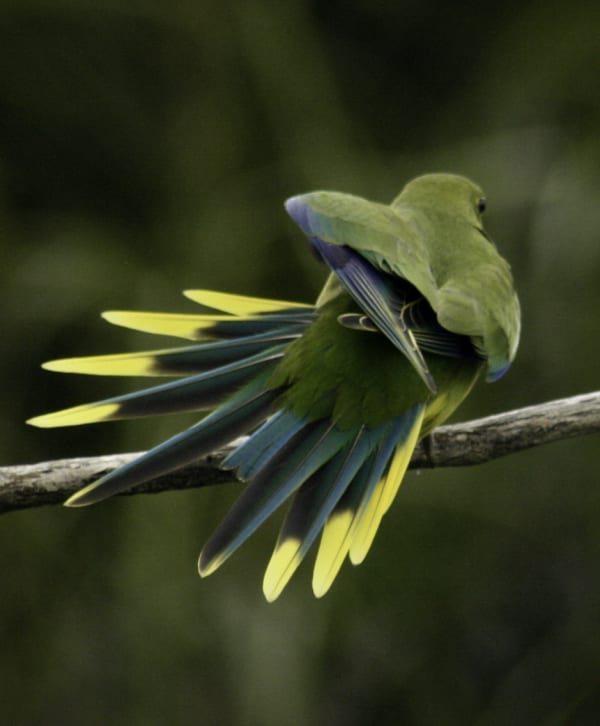
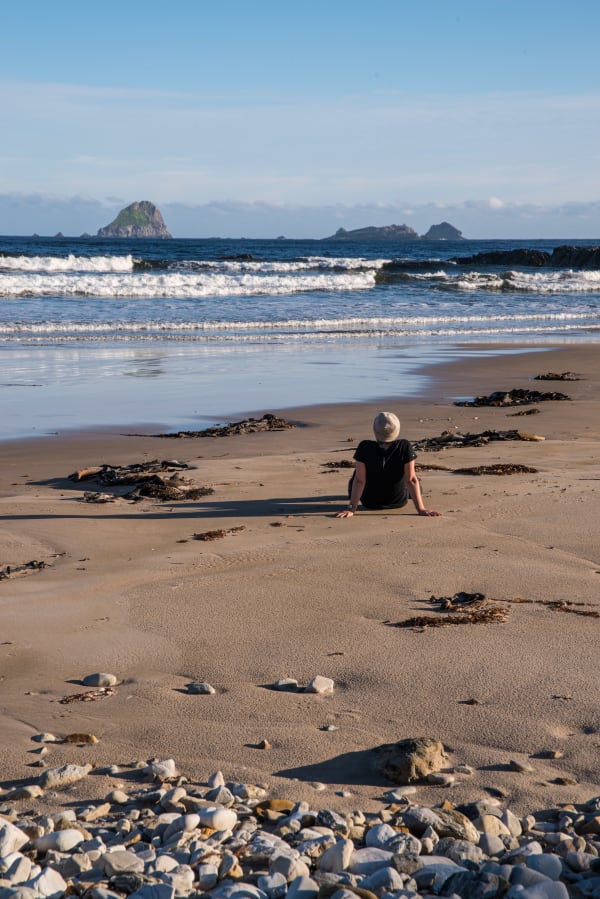
The dedication of these volunteers is a story in itself. When Laura Kelly, strategic director of Environment Tasmania, talks about working with “ecologically sustainable tourism businesses”, she knows what is at stake.
Pieter van der Woude also talks about ecologically sustainable tourism. Odalisque is a comfortable companion on a journey into deep isolation. It’s a profoundly satisfying experience. It’s good for the soul.
For more information about eco-tourism and Odalisque charters, see tasmanianboatcharters.com.au.
This article was first published in issue 82 of Forty South magazine.
Lucinda Sharp is the Director and Advertising Manager of Forty South Publishing.
13 years ago, after realising he was boring friends senseless banging on about Tasmania, Chris Crerar returned to his island home and hasn’t looked back. As a photographer and writer with a great love of Tasmania’s wild places, Chris has plenty of material on the island to keep him busy. Chris’ work focuses on Tasmania’s people, it’s incredible food and wine, sustainability issues and travel in Tasmania and further afield. When he’s away from work Chris can often found on the beautiful D’Entrecasteaux Channel sailing his little vintage yacht or hiking somewhere in the mountains. See more of Chris' work at chriscrerar.com.au on on social media at @chris_crerar_pw.










